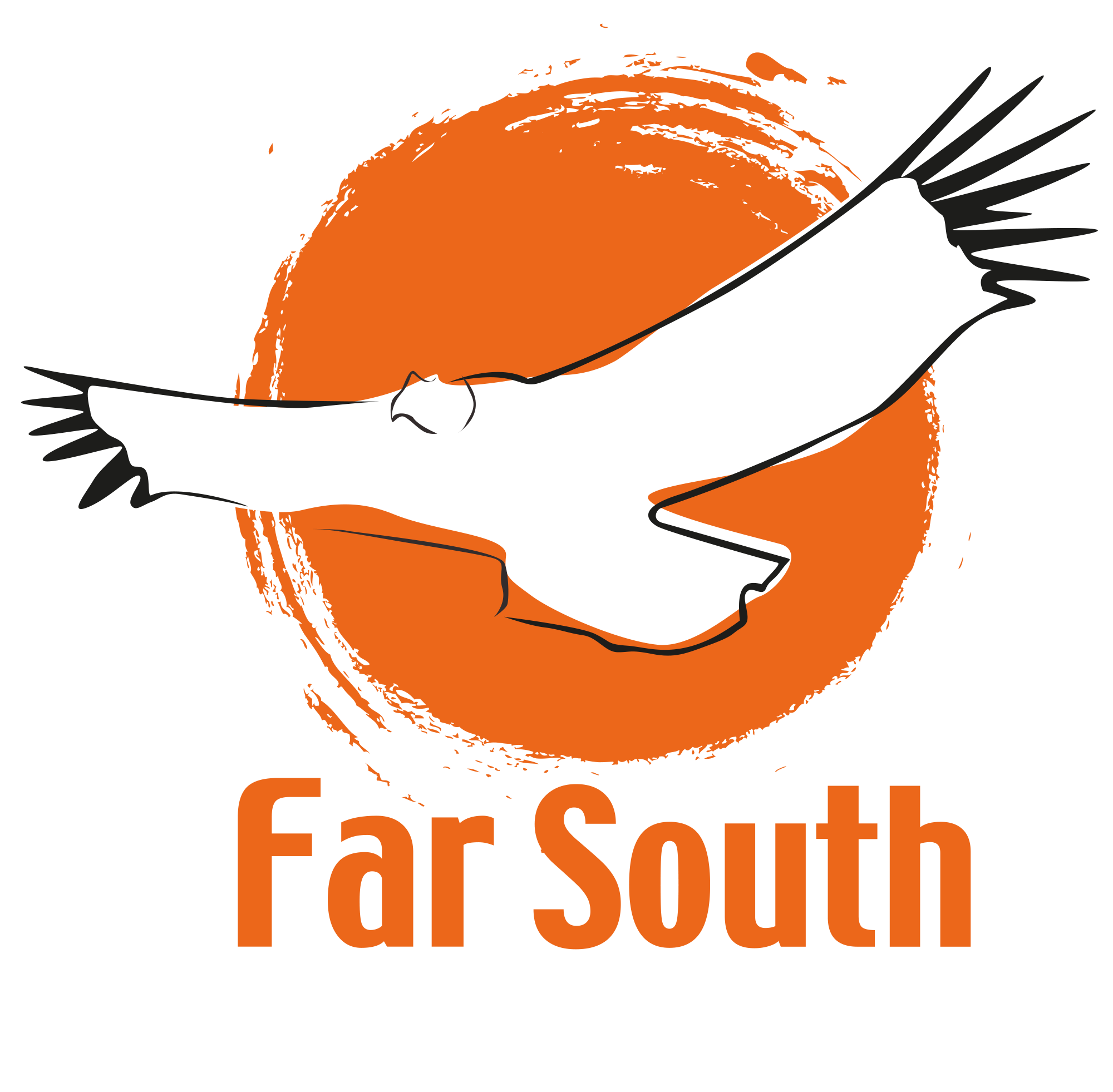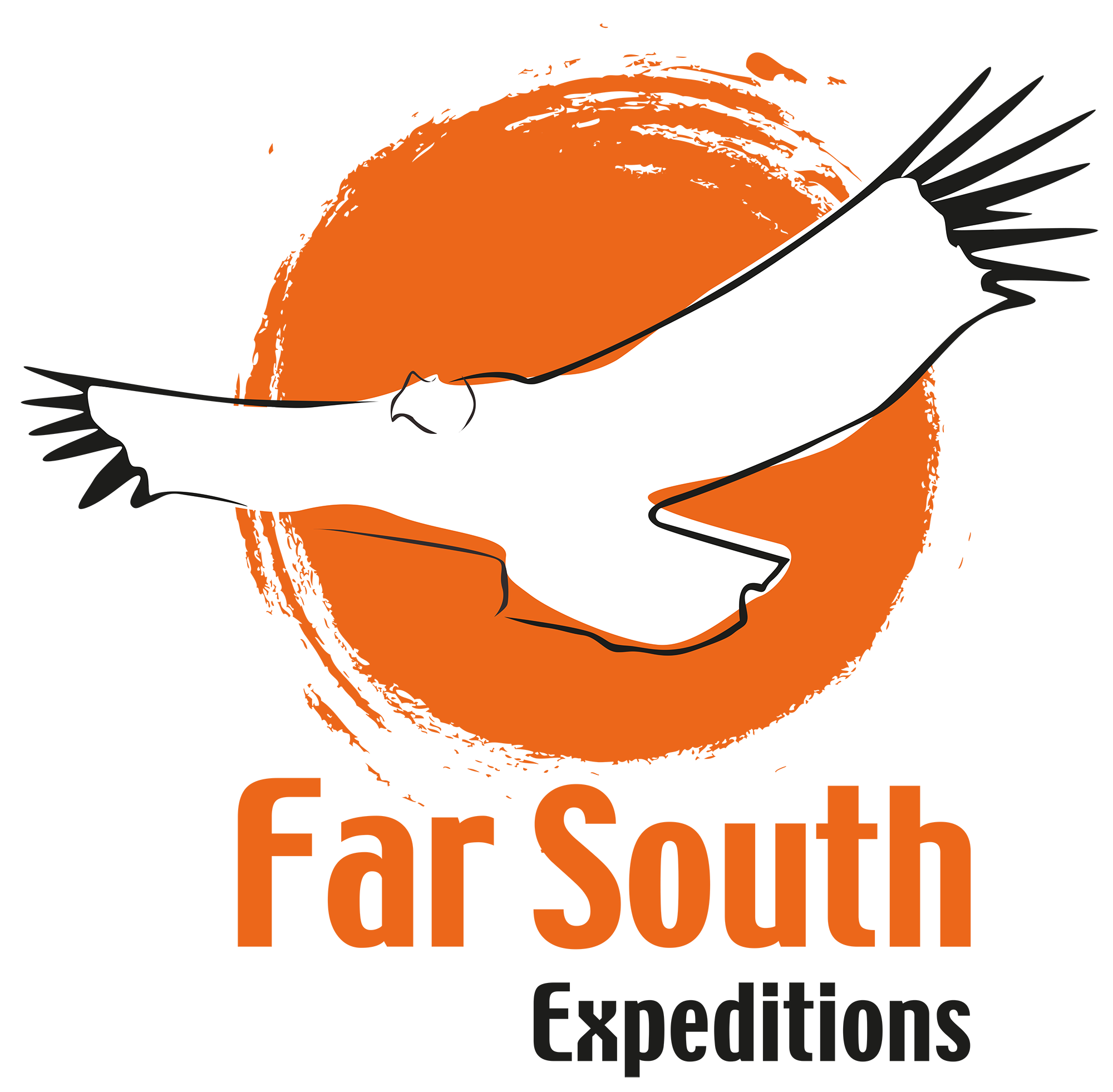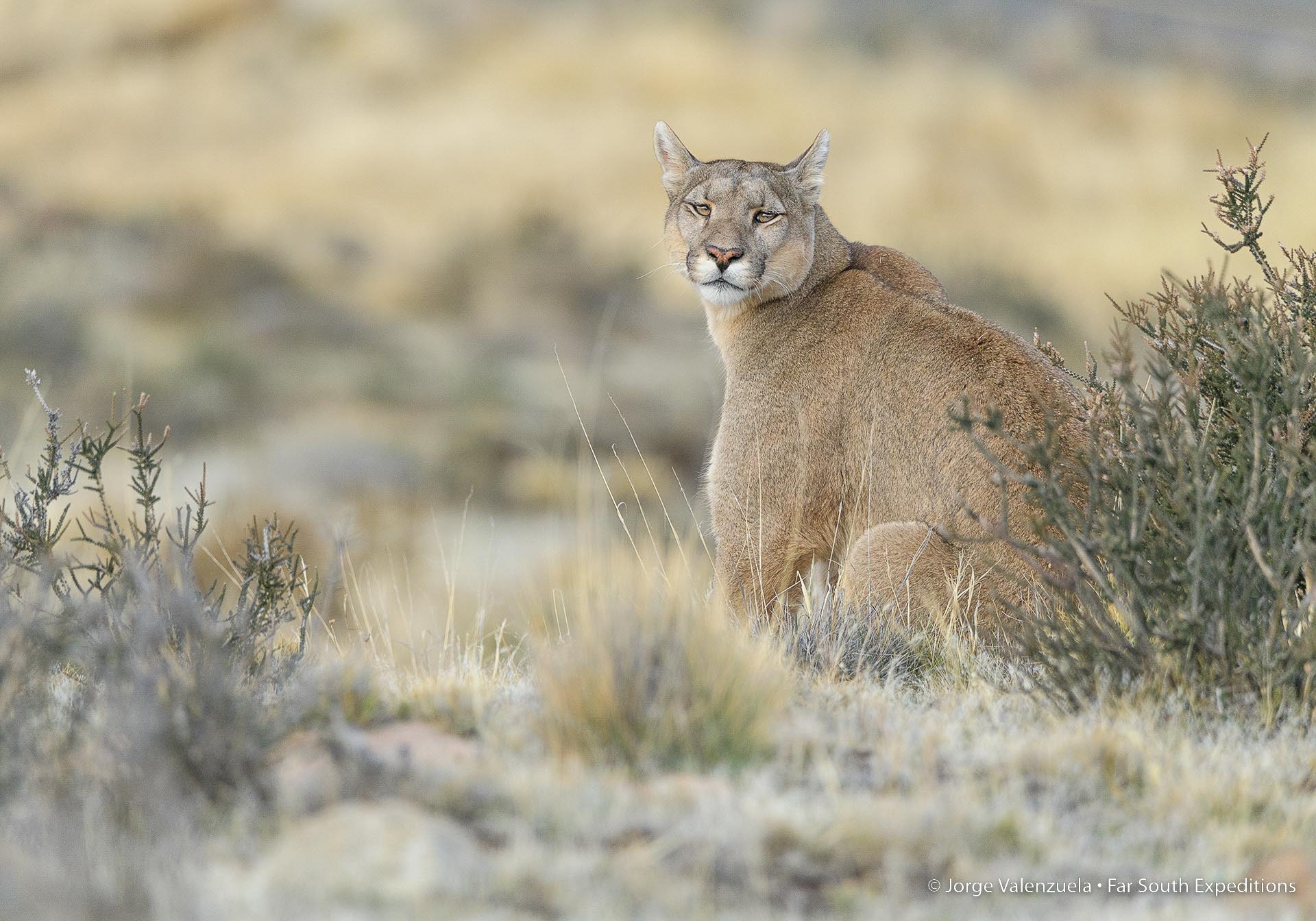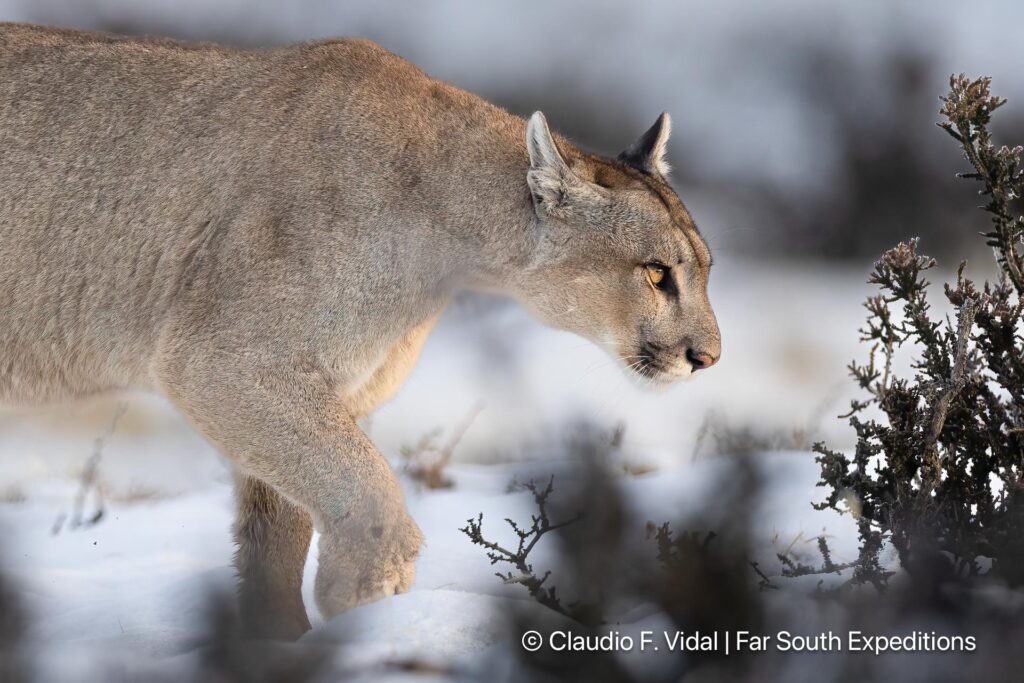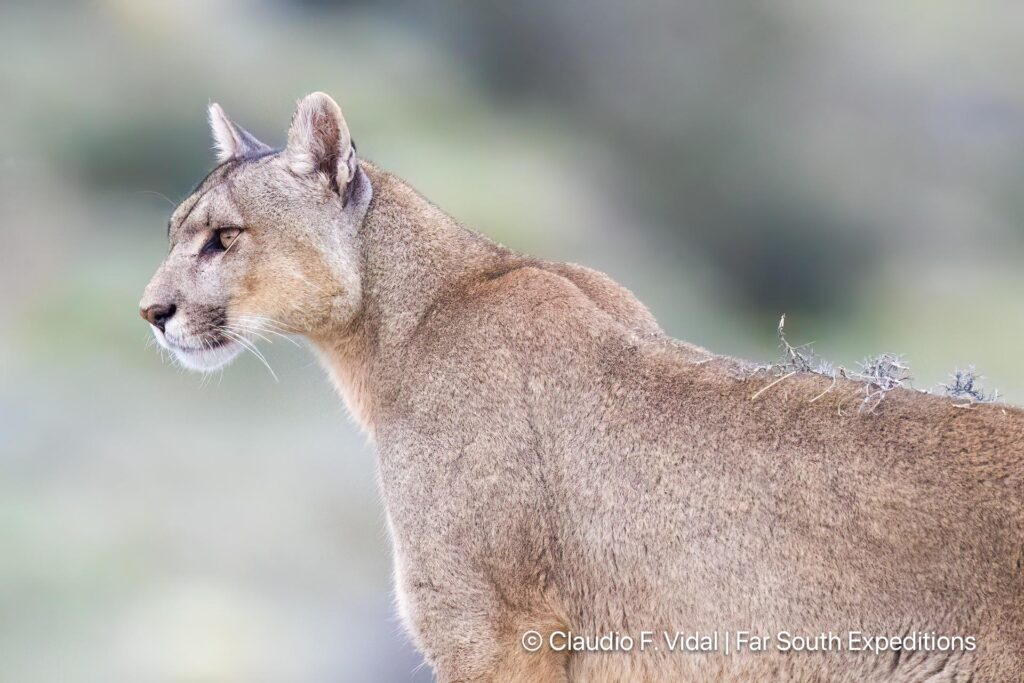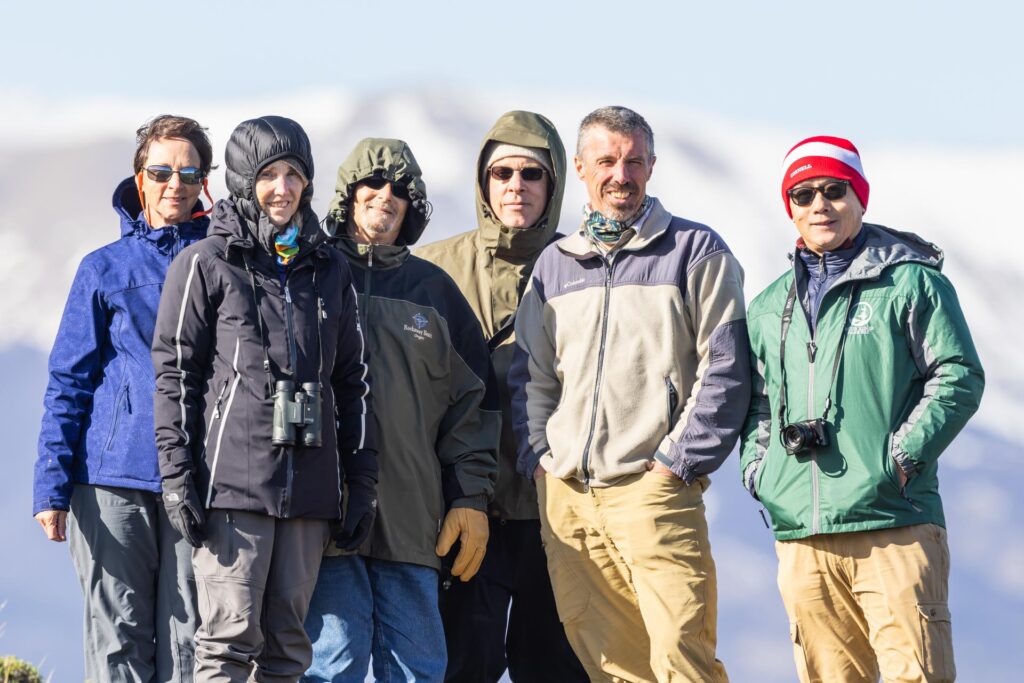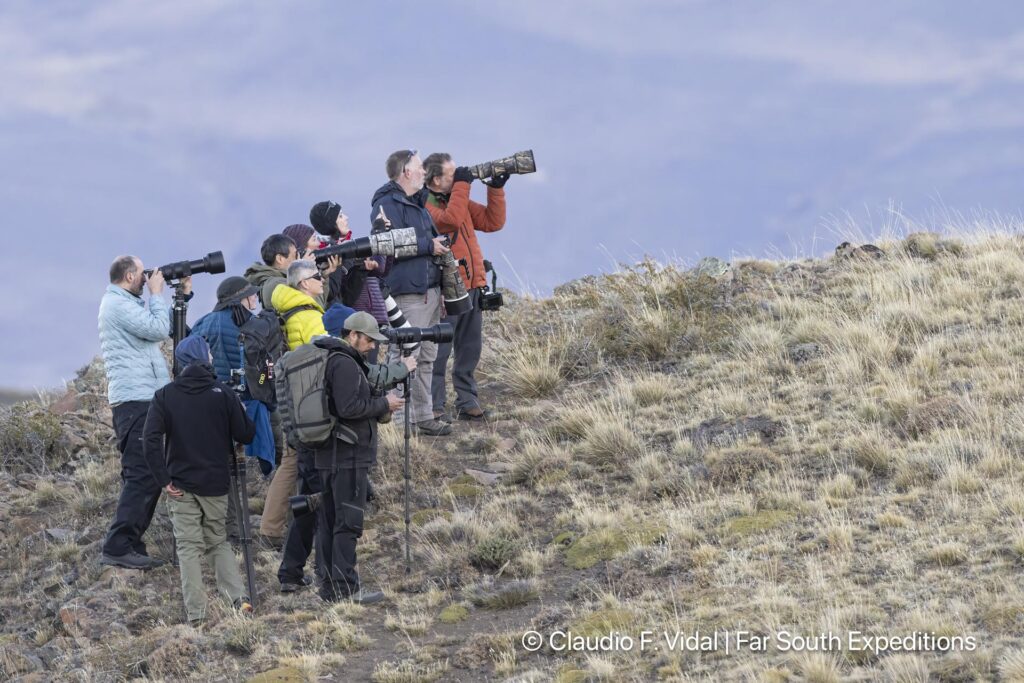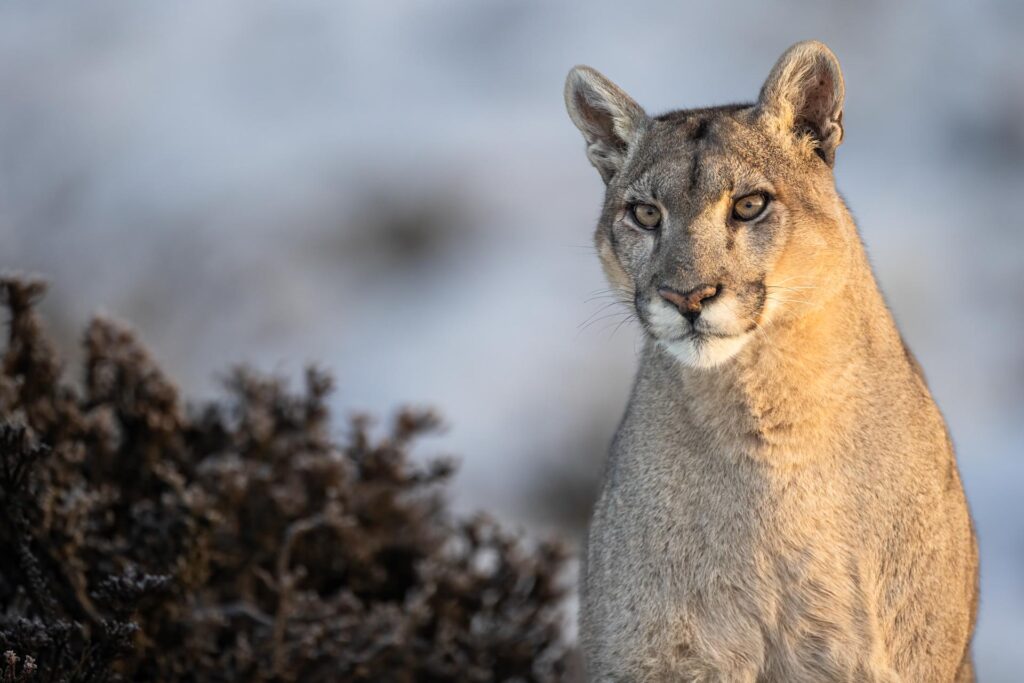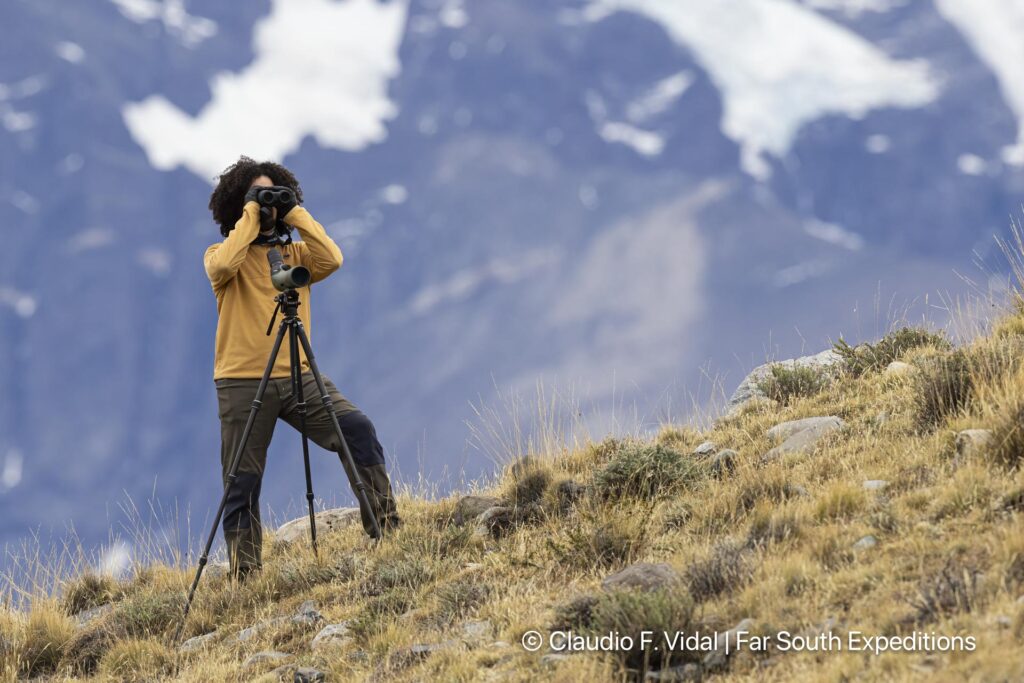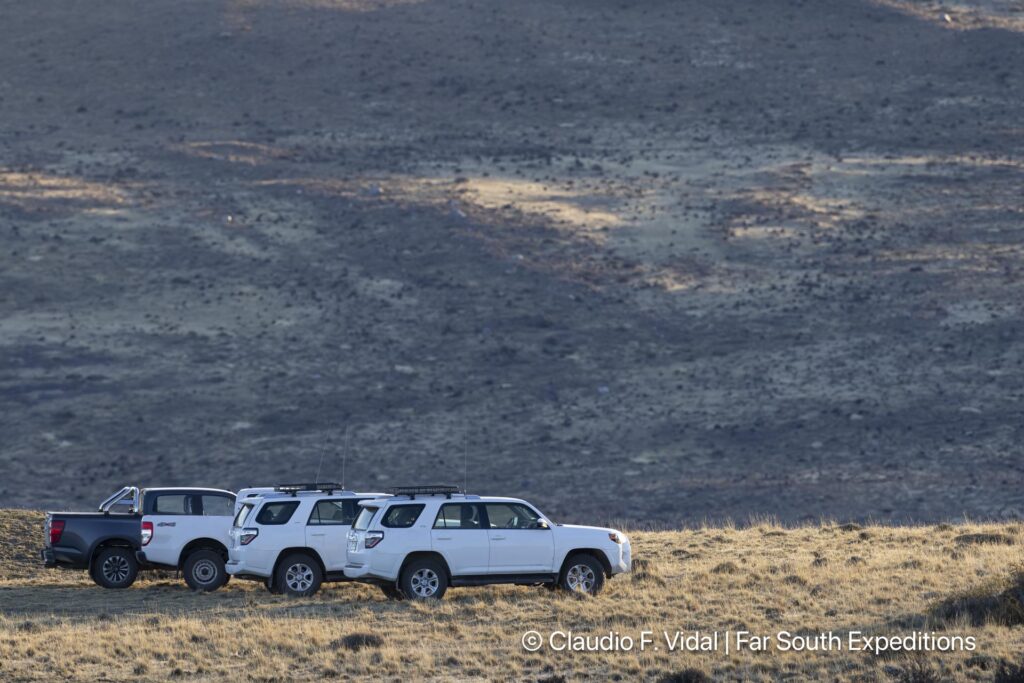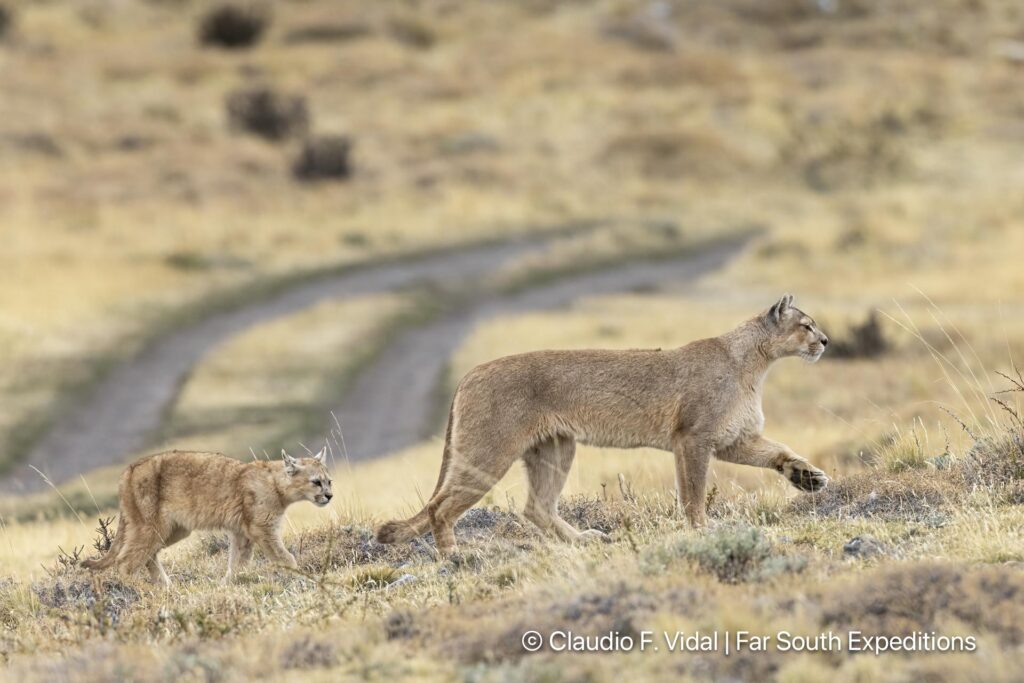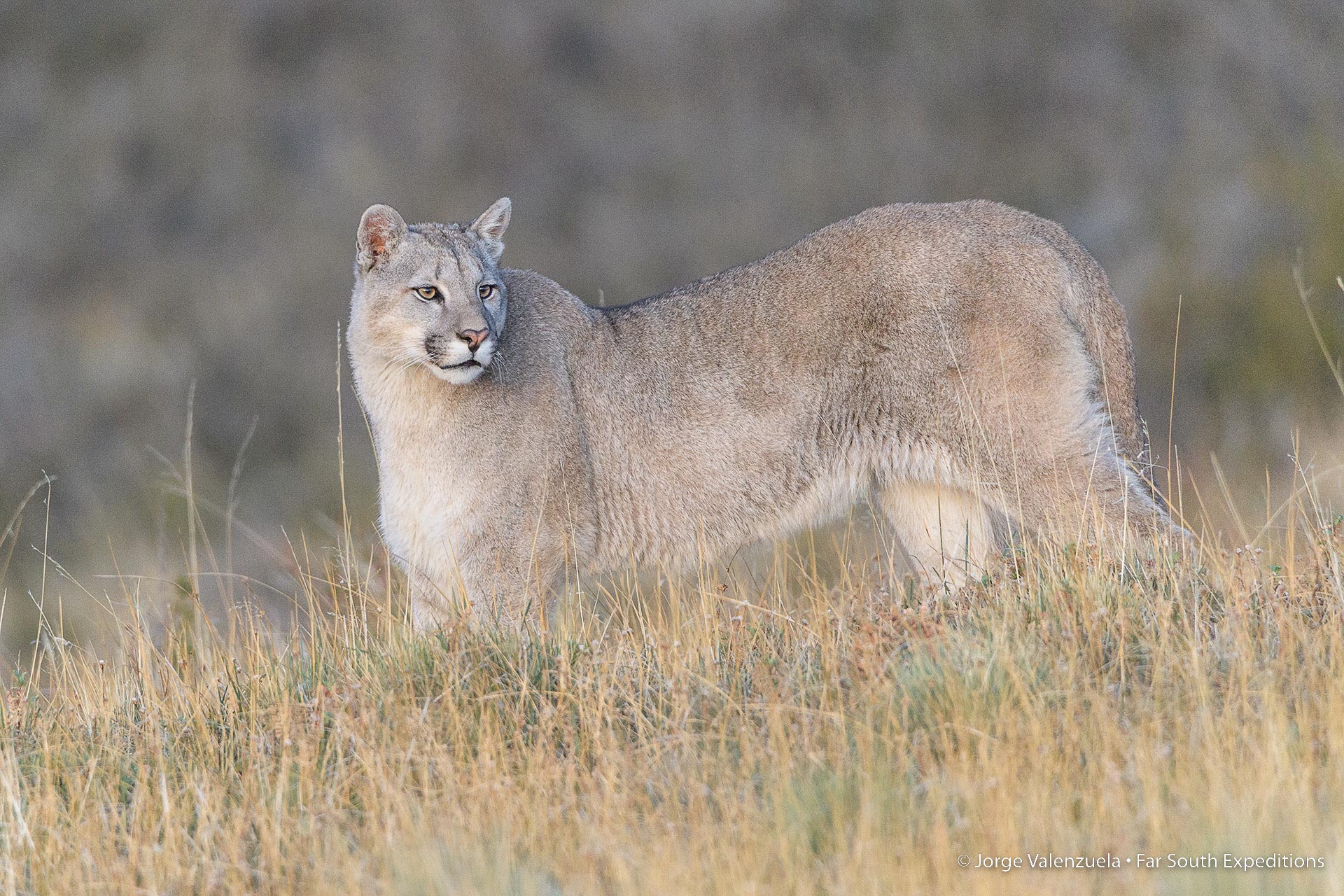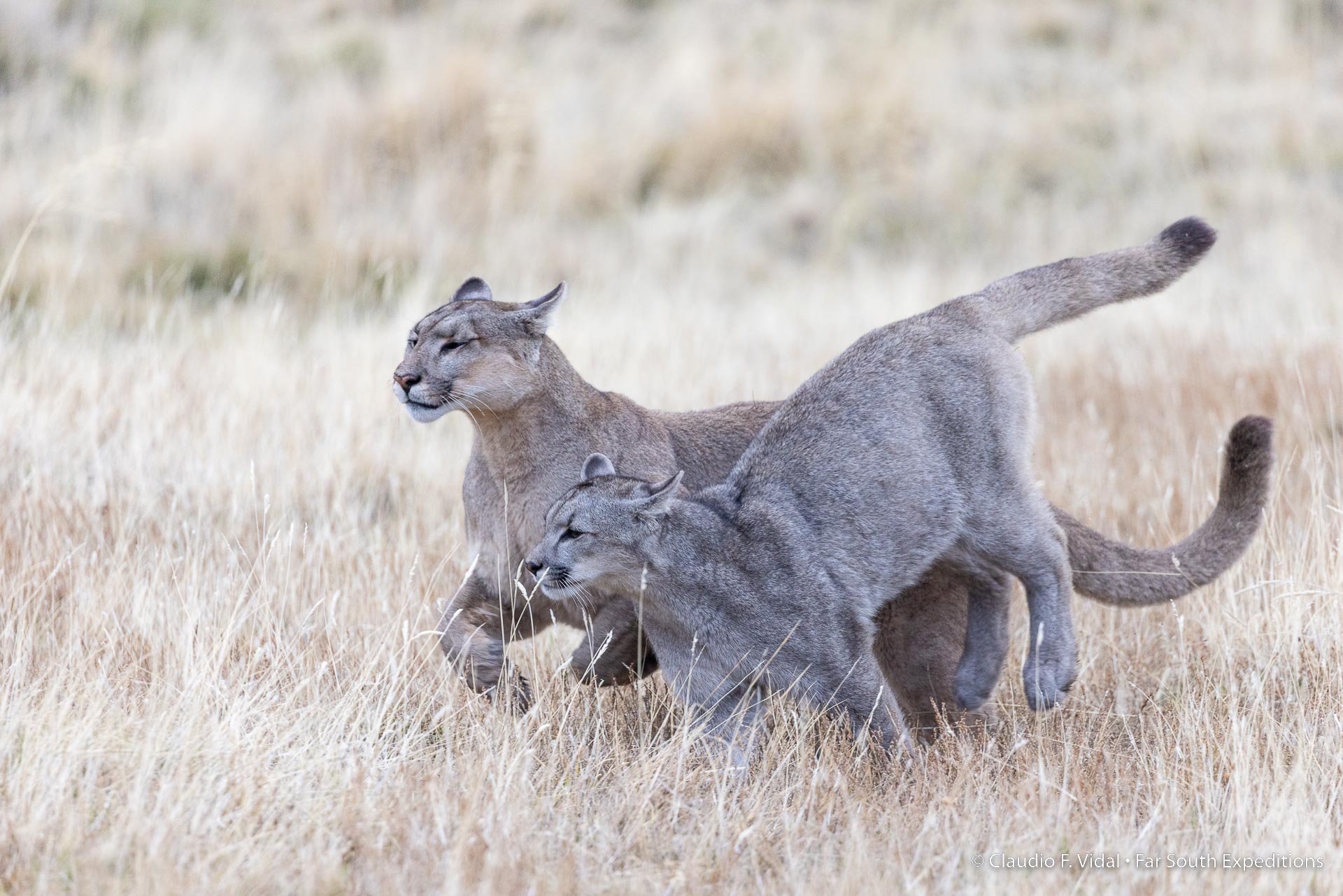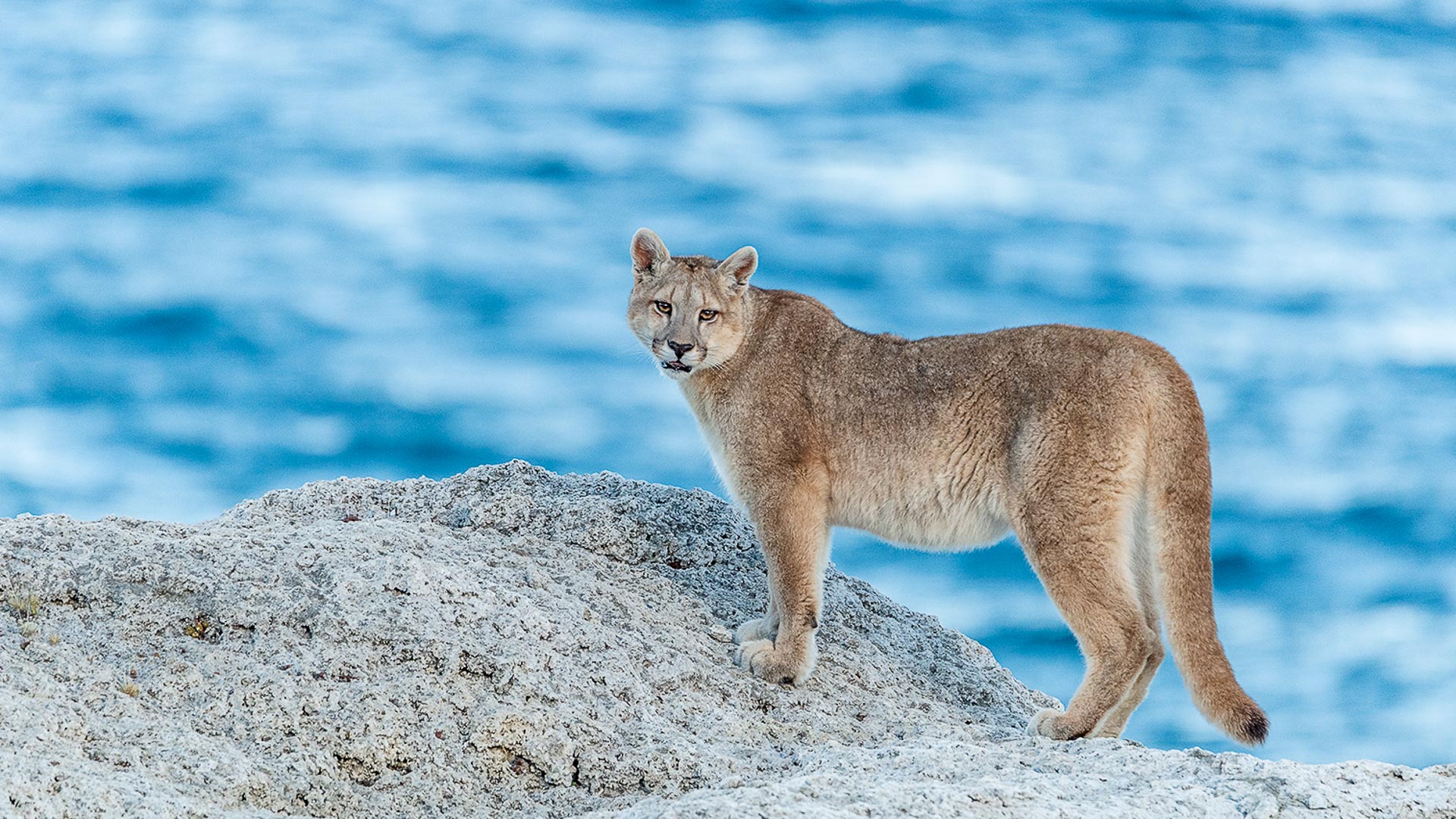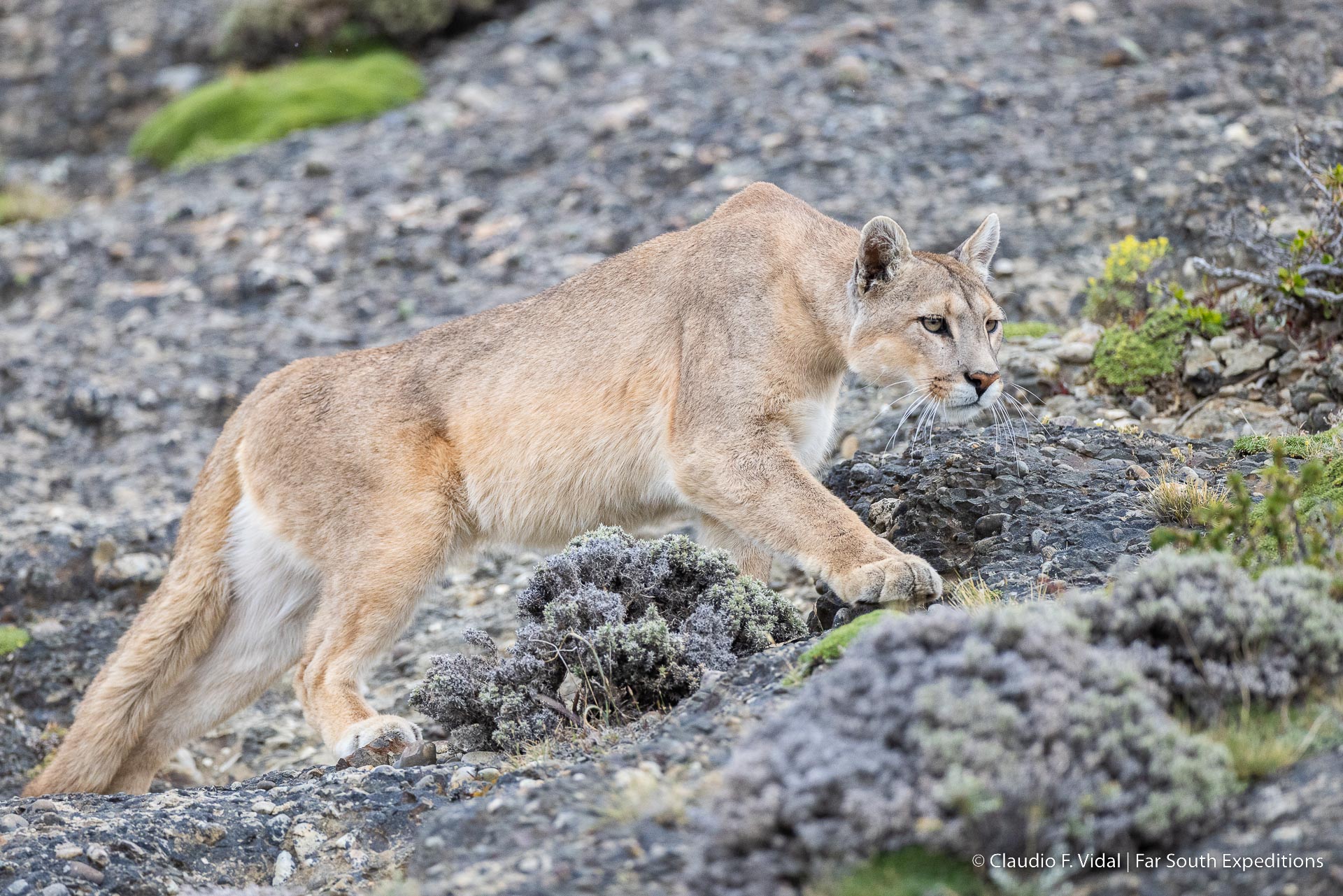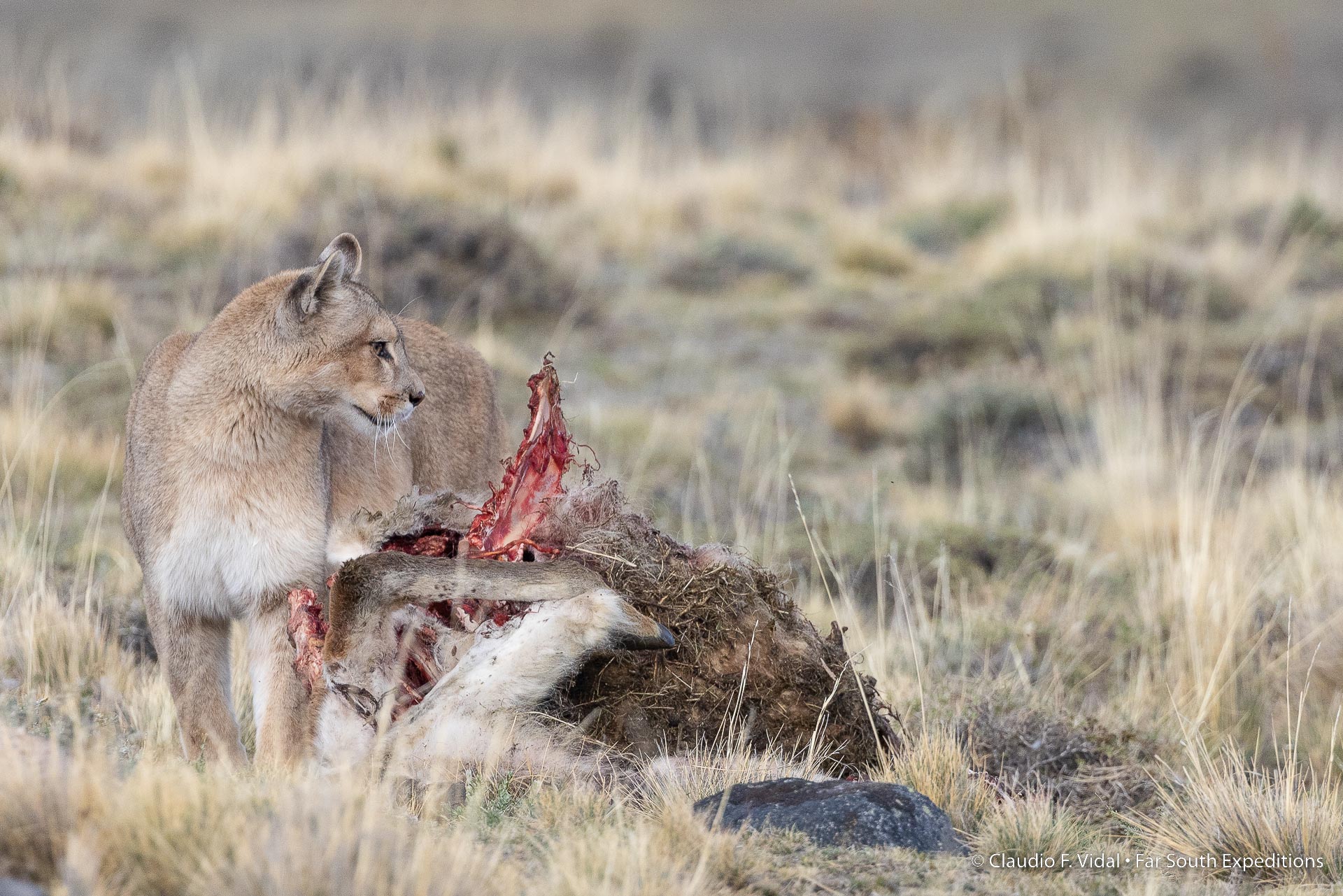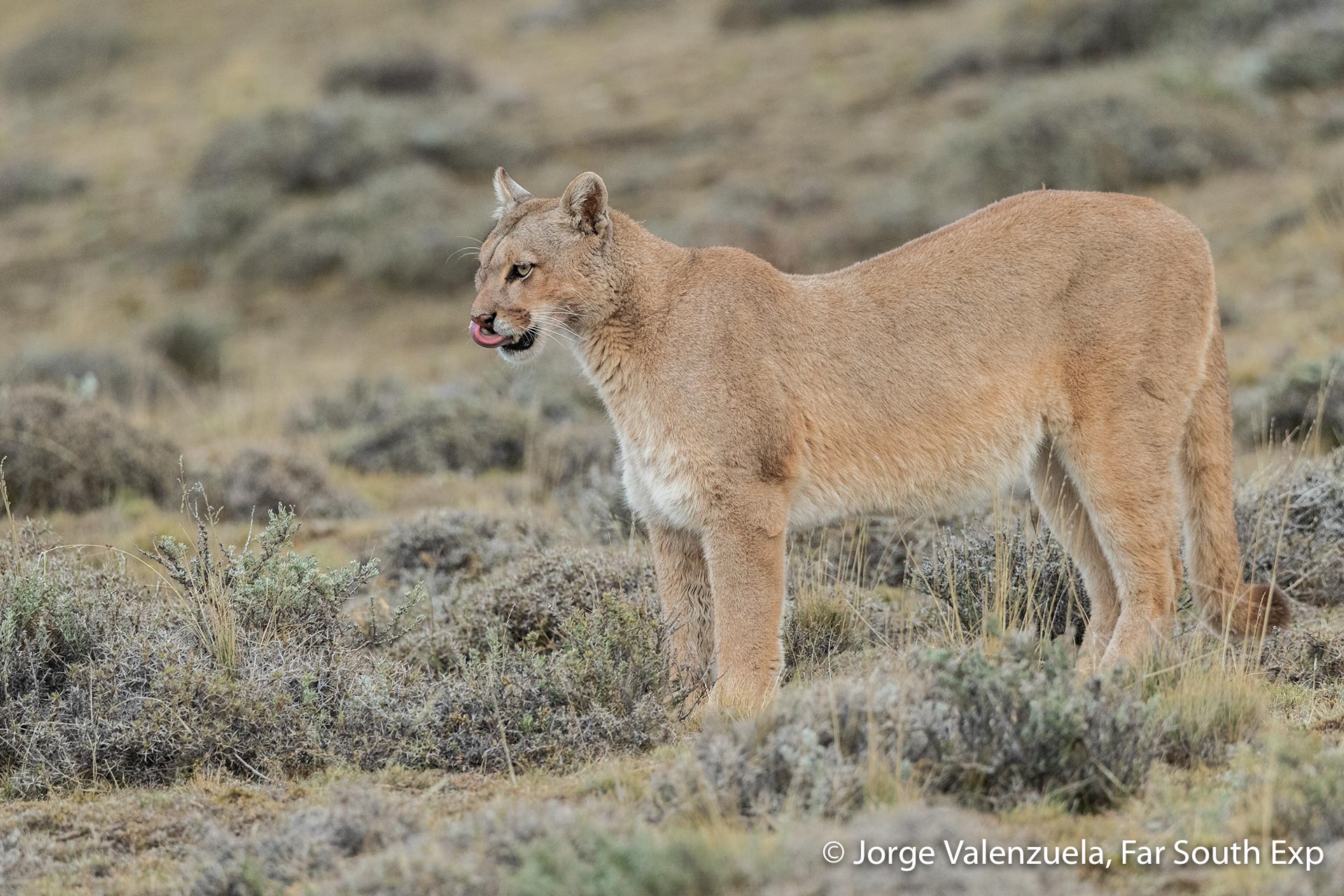For each day of our trip, we have organized a busy schedule of daily search outings for pumas. We will inspect the guanaco-rich puma hunting grounds located to the east, beyond the park limits into the private ranch Estancia Laguna Amarga, where Pumas occupy the same habitat as in the park. The area comprised by the northern coast of Sarmiento Lake, Laguna Amarga and Laguna Azul is well known for holding one of world’s largest concentrations of pumas in the wild.
A typical day in the field starts quite early and this depends on the season of the year. We have to remember that Patagonia is a high latitude location (51°S). We will have longer daylight hours during the spring and summer and much shorter field days during the autumn and winter.
We will have an early breakfast and will drive right after for approximately 30 minutes, from our hotel to the puma search area at Estancia Laguna Amarga. Beforehand, your guide will have coordinations with the puma tracker in order to determine where individual pumas are concentrating.
Our puma tracker will patrol puma corridors by car and on foot, and using this information we will plan our 2/3 km – 1.2/2 mile hikes inside the ranch, where we will have flexibility and freedom to walk off-trail, looking for pumas. These are moderate walks, so a minimum degree of fitness is required in order to be able to keep up with the group. Topography is usually not too demanding but there might be differences in altitude of around 50-250m / 160-1,000ft sometimes, although your group will walk at a slow and gentle pace. Maximum elevation during this trip will be 300m/1,000ft above sea level. You must be able to carry your own gear. If this is difficult for you, we ask you to coordinate this in advance with your guide in order to arrange some help. Our company does not provide porters but we are always eager to provide help.
Pumas are normally quite active at night, early in the mornings and late in the evenings. Our activities will gravitate around these preferred times by cats, when they are usually patrolling their territory, hunting guanacos and other prey, interacting with their offspring or commuting from their hunting grounds to their dens. We will have two sessions each day, a morning session and an evening session. During the middle of the day, we will not be watching pumas in order to avoid disturbance at a critical time, when they are resting, sleeping after a long night hunting elusive guanacos. Normally and depending on the light and condition of the day, we can continue photographing other wildlife in the park or provide our guests with some time to rest, charge batteries and get ready for the evening puma session.
Estancia Laguna Amarga model is very good in preventing overlapping among different groups of puma enthusiasts as they limit the number of visitors on a daily basis. We will investigate our own designated areas of the ranch (which will shift every day) and concentrate on individual pumas.
We will have packed lunches, snacks and drinks for our field days. Later in the evening, we will have dinner back at our hotel or sometimes inside the park, depending on the daylight hours and the season.
To see a female puma and its cubs against this magnificent mountain backdrop and big sky is one of the most magnificent wildlife spectacle in this part of the world. In company of our guide and puma tracker, we will follow pumas at a prudent distance with the help of binoculars and spotting scopes. The approach distance varies but there is a 50-meter (164ft) rule. Sometimes pumas are inquisitive and indulging, being very habituated to the human presence. Those will be our stars but we must respect their space; we must be prepared in advance and bring your longest lenses (400mm +) in order to take advantage of our photographic opportunities. Bringing a tripod or monopod is always recommended; a light-weight carbon-fiber version is always the best option.
If we have time, we will also take the opportunity to look for other wildlife species including Andean Condor and Chilean flamingo. We will have great opportunities to photograph the ubiquitous Guanaco; the local Andean Deer or Huemul, Patagonian Hog-nosed Skunk and the two canid species are also present in the park, Chilla and Culpeo foxes. Puma safari in patagonia.

